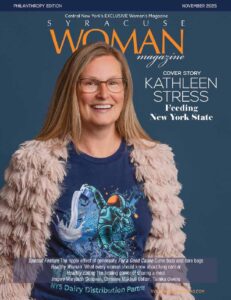The Power of Diet, Muscle Health, and Longevity
By Eric Rose
As we age, our bodies undergo significant changes that require us to rethink how we approach our health, particularly when it comes to diet and exercise. One of the most pressing challenges is sarcopenia, the gradual loss of muscle mass and strength that begins as early as our thirties and accelerates as we reach our fifties and beyond. However, the latest research has shown that maintaining sufficient muscle mass is more critical to longevity than simply achieving a healthy BMI. By making informed dietary choices and incorporating resistance training into our routines, we can slow this process, maintain our strength, independence, and overall well-being, and even enhance our lifespan.
In recent years, scientific studies have increasingly highlighted the importance of muscle mass in predicting long-term health and longevity. While maintaining a healthy BMI has long been considered a cornerstone of overall wellness, emerging research suggests that sufficient muscle mass is an even more crucial factor in living a longer, healthier life. Muscle mass supports metabolic health, protects against chronic diseases, and contributes to better physical function, which is vital as we age.
Sarcopenia, characterized by the loss of muscle mass and function, is a natural part of aging but doesn’t have to dictate our quality of life. Muscle loss can lead to decreased strength, balance, and mobility, making daily activities more challenging and increasing the risk of falls and fractures. Several factors contribute to sarcopenia, including hormonal changes, decreased physical activity, and inadequate nutrition—particularly a decline in protein intake.
Essential amino acids (EAAs) are the building blocks of proteins, crucial for the synthesis and repair of muscle tissue. Unlike non-essential amino acids, which our bodies can produce, EAAs must be obtained through our diet. Foods rich in EAAs — such as lean meats, fish, dairy, and certain plant-based proteins — are vital for stimulating muscle protein synthesis. Leucine, in particular, plays a key role in triggering the body’s muscle-building processes, helping to counteract muscle breakdown and promote growth and repair.
As a health coach and chef, I know that a balanced, nutrient-rich diet is essential for supporting muscle health and longevity. Here are some strategies to help combat sarcopenia and promote long-term wellness through diet:
- Prioritize Protein-Rich Foods: Protein is essential for muscle health, and its importance only grows as we age. Aim to include a source of high-quality protein with every meal. Lean meats, poultry, fish, and seafood are excellent sources, providing the EAAs needed to maintain muscle mass. For those who prefer plant-based options, legumes, tofu, tempeh, and quinoa are all great choices.
- Incorporate Fiber-Rich Foods: A healthy diet is about more than just protein. Fiber is crucial for digestive health, regulating blood sugar levels, and maintaining a healthy weight. Fruits, vegetables, whole grains, and legumes are rich in fiber and should be regular staples in your meals.
- Don’t Forget Probiotics: Maintaining a healthy gut is vital as we age. Probiotics, found in fermented foods like yogurt, kefir, sauerkraut, and kimchi, support digestive health and boost the immune system. Including these foods in your diet can help promote a healthy gut microbiome, which is linked to overall well-being.
- Consider Essential Amino Acid Supplementation: For some individuals, particularly those who struggle to consume enough protein through food alone, an EAA supplement may be beneficial. However, it’s important to consult with a healthcare professional before starting any new supplement regimen.
While diet is a cornerstone of healthy aging, it must be paired with regular physical activity, particularly resistance training, to be truly effective in promoting longevity and combating sarcopenia. Resistance training involves exercises that work your muscles against a force, such as lifting weights, using resistance bands, or performing bodyweight exercises like squats and push-ups.
This form of exercise is one of the most effective ways to preserve and build muscle mass as we age. It helps counteract muscle loss, improves muscle strength and function, and supports metabolic health. Additionally, resistance training has numerous other health benefits, including improving bone density, enhancing insulin sensitivity, and boosting mental well-being.
Aging is a natural process, but with the right approach to diet and exercise, we can maintain our strength, vitality, and independence well into our later years. By prioritizing muscle mass through protein-rich foods, incorporating fiber and probiotics into our meals, and considering essential amino acid supplementation, we can support our muscles and overall health.
Pairing these dietary strategies with regular resistance training will help combat sarcopenia, keeping our muscles strong and functional. Most importantly, this holistic approach to aging recognizes that maintaining muscle mass is key to not just living longer, but living better. Remember, it’s never too late to start taking care of your body. By making these changes today, you can enjoy a healthier, more active tomorrow — and a longer, more fulfilling life.
Editor’s note: Chef Eric Rose is an award-winning chef and health coach.
Recipe:
Healthy Italian Skillet!
Makes 4 servings
13 oz chicken
5 cups diced zucchini
1 small diced green pepper
3 /4 cup low sugar pasta sauce
48 slices turkey pepperoni
1 tsp Garlic powder
1 tsp Italian seasoning
1 tsp Salt to taste
Pinch Pepper to taste
Pinch Red pepper flakes
2c low fat mozzarella cheese
4 tsp olive oil
Sautée chicken and zucchini, pepper in olive oil until cooked, add other ingredients and top with cheese until melted in the skillet.







You must be logged in to post a comment.